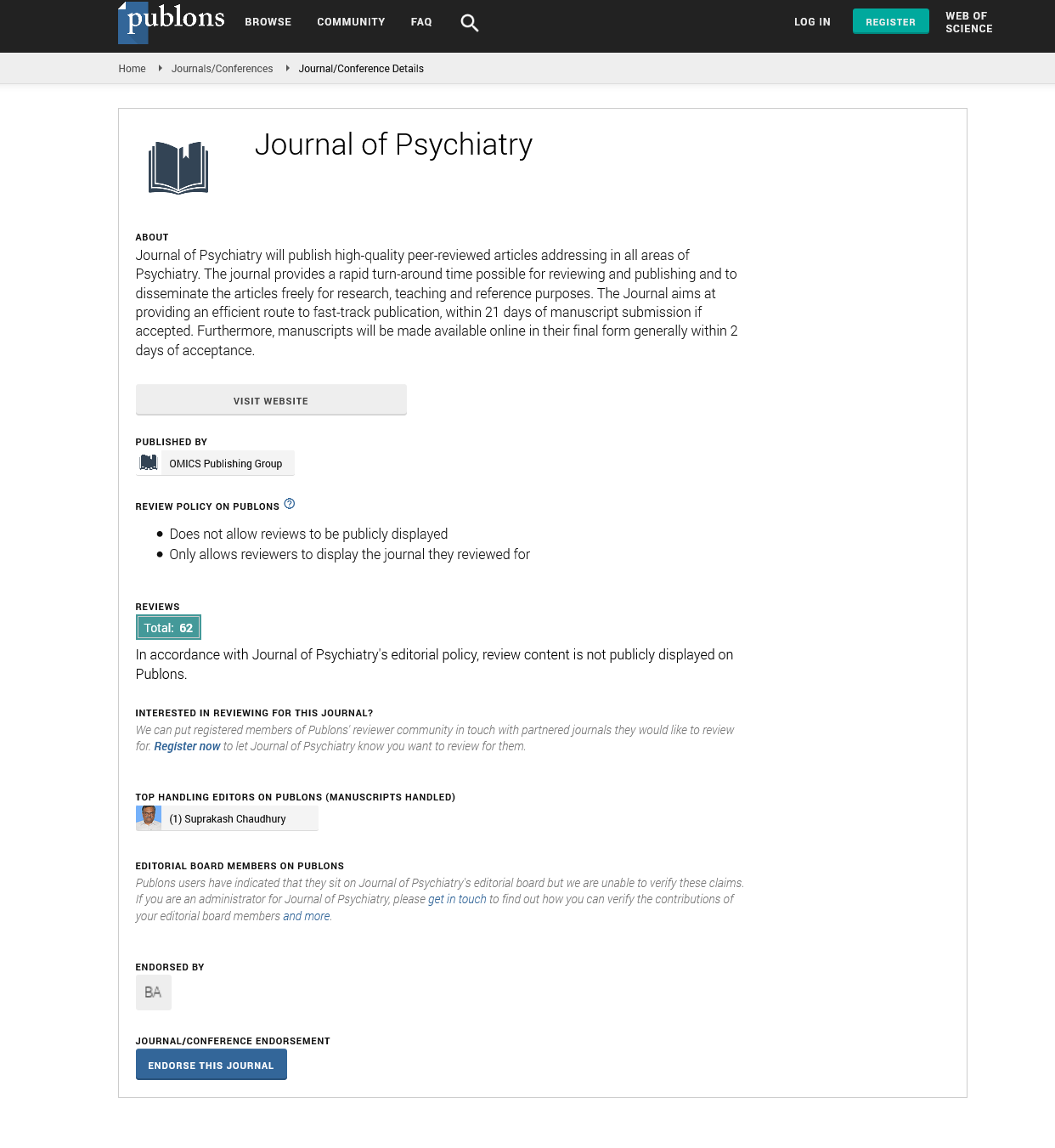Indexed In
- RefSeek
- Hamdard University
- EBSCO A-Z
- OCLC- WorldCat
- SWB online catalog
- Publons
- International committee of medical journals editors (ICMJE)
- Geneva Foundation for Medical Education and Research
Useful Links
Share This Page
Open Access Journals
- Agri and Aquaculture
- Biochemistry
- Bioinformatics & Systems Biology
- Business & Management
- Chemistry
- Clinical Sciences
- Engineering
- Food & Nutrition
- General Science
- Genetics & Molecular Biology
- Immunology & Microbiology
- Medical Sciences
- Neuroscience & Psychology
- Nursing & Health Care
- Pharmaceutical Sciences
Abstract
The Potential Importance of Electromagnetic Waves for The Treatment of Psychiatric Behavioral Disorders
Efforts by psychiatrists to treat mental disorders are based on what is known about the relationship between the brain and the mind. The prevailing theory is that the functions of the mind responsible for normal and abnormal behavior emerge from the activity of the brain. Thus, disorders of the mind can be reduced to physical phenomena, i.e. the propagation of action potentials along neural networks and transmission across synapses and can therefore be explained in terms of these activities. However, this view cannot explain how higher mental attributes actually emerge from these activities, which is essential for understanding the origin of abnormal behavior. Studies of pain show that the mind and brain are separate entities, both functionally and spatially and this has major implications for treating mental disorders. Pain from an injury, encoded in APs, induces a Long-Term Potentiation (LTP) in a population of pyramidal neurons in the anterior cingulate cortex. The LTP activates NMDA receptors, resulting in the transformation of the information about pain into EM waves. The waves then communicate this information to consciousness and the mind where the pain is experienced. Pain-associated EM waves are also emitted from the amygdala and Nucleus accumbens so by extrapolation, each component of a behavior can be traced to an EM wave at a certain frequency and it is the summation of all sensory experiences transmitted by EM waves that provides the knowledge that guides behaviors. Since the creation and disemination of EM waves can be regulated by Transcranial Magnetic Stimulation (TMS) protocols, psychiatric disorders can be treated by targeting the aberrant waves that are responsible for the behavior. TMS protocols are already being used to treat schizophrenia and other mental disorders with some success and these new findings will provide important new information that should improve outcomes.
Published Date: 2025-10-22; Received Date: 2025-09-22

